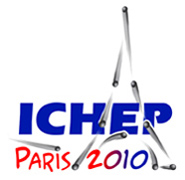Speaker
Prof.
Ken Long
(Imperial College London)
Description
The International Design Study for the Neutrino Factory (the IDS-NF) has been established by the Neutrino Factory community to deliver the Reference Design Report (RDR) for the facility by the 2012/13 decision point identified by the Strategy Session of CERN Council. The baseline design for the facility will provide 10^21 muon decays per year from 25 GeV stored muon beams. The facility will serve two neutrino detectors; one situated at source-detector distance of between 3000—5000 km, the second at 7000—8000 km. The discovery reach of the Neutrino Factory will be presented and compared with alternative techniques (beta-beam and super-beam). The option of a ‘low-energy’ Neutrino Factory, which may be attractive if θ13 is found to be large, will be presented. The muon-beam requirements will be defined and the specification of the accelerator facility required to deliver them will be described. The accelerator subsystems of which the facility is comprised will be briefly described along with an outline of some of the challenges such a facility presents. Several technologies are being discussed for the magnetised neutrino detectors: iron calorimeters; giant liquid argon TPCs; and totally active scintillating detectors. The IDS-NF baseline option is a 100 Kton magnetised iron sampling calorimeter at the intermediate baseline and a 50 Kton detector at the magic baseline. A near detector of much smaller mass for precise measurement of neutrino flux and neutrino cross-sections will be situated close to the end of the muon storage ring straight section(s). The various detector options will be discussed, covering the most important aspects: performance; technological challenges; as well as the R&D program and expected cost drivers.
Primary author
Prof.
Ken Long
(Imperial College London)




